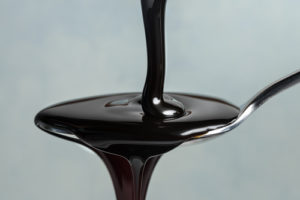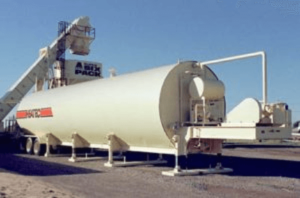Why bitumen needs to be heated
Last updated on September 22nd, 2023 at 08:42 pm
Important facts about Bitumen
 Bitumen, commonly referred to as tar or asphalt, is a blend of organic liquids which are black, sticky and very viscous. There are two main types of bitumen; crude or naturally occurring and refined bitumen.
Bitumen, commonly referred to as tar or asphalt, is a blend of organic liquids which are black, sticky and very viscous. There are two main types of bitumen; crude or naturally occurring and refined bitumen.
Naturally occurring bitumen is a tar-like type of petroleum which is sticky. It is also thick and heavy. As such, the only way that it will flow is if you heat or dilute it. When it is at room temperature, it will be similar to cold molasses.
The refined type, on the other hand, is the residual or leftover fraction. You obtain refined bitumen by fractional distillation of crude oil. This type is the heaviest and it also has the highest boiling point of 525 degrees Celsius.
Geological origin
Naturally occurring bitumen is formed or created from the remnants of microscopic, ancient algae and several other once-living organisms. When these organisms died, their remnants were deposited in the mud at the bottom of the ocean. Because of the heat and pressure under the earth’s surface, these remnants where turned into substances such as bitumen and petroleum. There is also a possibility that some bitumen is a form of primordial material or substance formed during the accretion of the earth. Thereafter, it was exposed to bacteria which feed on hydrocarbons. This is because some bitumen can also be found in Archean rocks as well as meteorites.
What is bitumen used for?
This substance is mainly used in the construction industry when paving roads. It is also used for Bituminous Waterproofing Products as well as producing roofing felt and sealing flat roofs. Some years back, people used bitumen to waterproof boats. They also used it as a coating for buildings or structures with certain additives.
According to the Greek historian, Herodotus, people used hot bitumen as mortar when they were building the walls of Babylon. In the past, this substance was used in photographic technology. It was particularly used by Joseph Nicephore Niepce, a French scientist when he took his first picture; this was the first picture or photo ever taken. He made use of bitumen by smearing it on pewter plates. Thereafter, he exposed it to light and a black and white image was created.
Nowadays, computer enthusiasts often use thin bitumen plates to silence computer cases or else those noisy computer parts like the hard drive. Bitumen is also used in dishwashers. Layers of bitumen are used in high-end dishwashers so that they have sound insulation.
Are there alternatives to bitumen?
Because of the growing concern over the effect of greenhouse gases, bitumen alternatives have been introduced. These alternatives are basically non-toxic and environmentally friendly. Nowadays, you can make bitumen from non-petroleum based resources which are renewable like molasses, rice, sugar and corn starch. You can also make this substance from waste material; this is achieved through fractional distillation of used motor oil.
Why bitumen needs to be heated
Through heating bitumen, you will be optimizing its performance. That is why if you are going to use it as an adhesive, you must minimize the period during which the hot substance is exposed to air. In other wo rds, it must not be exposed for more than the minimum time. The reason for this is that it hardens and it will not work effectively when you expose it to air an excessive heat.
rds, it must not be exposed for more than the minimum time. The reason for this is that it hardens and it will not work effectively when you expose it to air an excessive heat.
It is also advised to keep it away from water. The reason for this is that if you let it come into contact with water it can foam Essentially, temperature control is crucial in determining the quality control of bitumen. Try to maintain a temperature which is recommended for the grade and type. Bitumen will solidify as it cools. When that happens, you can’t really work with it. Its storage temperature must not be exceeded throughout the mixing process.
In as far as storage is concerned; bitumen is mainly stored in large tanks made from mild-steel plate. In order for the bitumen to remain fluid, hot oil or even steam is pumped into the tanks.
What types of heaters are used?
The bitumen is normally stored in Bitumen Tanks. This type of tank minimizes heat loss because it is properly insulated. The bitumen is actually heated by a heating tube which is W-shaped which has an automatic burner. For those looking to buy bitumen tanks, there are basically two options. You can either opt for a hot oil heated storage tank or a direct heating storage tank.
These tanks have various storage capacities ranging from 15 to 30 tons. Indirect heating tanks come with a thermic oil heater; it is a Japanese design oil heater. However, all tank types have auto thermostatic controls as well as level indicators. Basically, the asphalt industry uses asphalt tanks, thermal fluid heaters, hot oil heaters as well as polymer blending systems.
The tanks come in horizontal and vertical configurations. They can be stationary or mobile and some are hot oil heated while others use electricity. Tanks also include certain ancillary items like thermostats, hot oil heaters, level indication and pumps. At the end of the day, apart from monitoring the heat of the bitumen, if you want to produce a good quality product, you require skills, modern refinery technology as well as experience.
High-quality bitumen is produced by companies which have been in the business for a while; companies which are continuously researching and developing this product.
